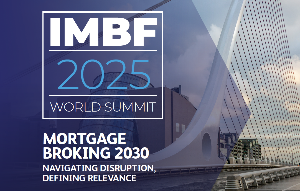
The latest Property Market & Economic Report reveals mortgaged investors’ buying surged from 27% to a record-high 29% share of purchases, reinforcing the heated market, which led to the Government’s recent policies in an effort to dampen the housing market.
CoreLogic chief property economist Kelvin Davidson says the figures in the report are a clear “line in the sand” following the extension of the bright-line test and scrapping of mortgage interest tax deductibility.
“While the figures in the report largely pre-date the housing policy changes, they are a valuable line in the sand as to where the property market was when the Government stepped in.
“Now the game has changed especially for investors, so we expect to start seeing through our various market measures how these changes flow through to our buyer classification data and ultimately, property values.”
Davidson says it’s now all about what happens next.
“Buyer classification figures will be of most interest to gauge the fallout from the recent changes, particularly the volume of investment buys of existing property and new builds. Speculation about rents increasing and investors racing to sell rental properties is likely unfounded.”
He also notes the mortgage deferral scheme coming to a close, with the majority of people now back on a form of loan repayments without undue strain.
Economy healthy
“There are positive indicators of the health of the economy, but it is not out of the woods yet and the country still faces a slow recovery to get back to ‘normal’, while also dealing with the reality of much higher government debt than before.”
Across New Zealand asset classes, residential real estate is worth $1.46 trillion, with $307 billion of this number in home loans; commercial and industrial real estate has reached $232 billion; New Zealand listed stocks come in at $183 billion; and New Zealand Superannuation and KiwiSaver are worth $134 billion.
Mortgages are secured against 21% of residential property, or in other words, 79% of the value of the property market is household equity.
“Household debt is high relative to income, and to some extent the debt has only been sustainable in recent years because of low mortgage rates,” says Davidson.
He says the recent strength of the property market was always going to be unsustainable and a slowdown is likely to occur in the second half of 2021 – “the Government changes just reinforce that”.
CoreLogic expects total property sales volumes to be lower this year than they were last year and to potentially fall a bit further again next year.
Sales levels to drop
Property market activity levels have stayed strong in the past two to three months, with the total sales for the first quarter at 26,820, up by 25% from a year ago. That followed growth of 25% in the third quarter last year and 33% in the fourth quarter.
Davidson says some of the previous growth was probably a “catch-up” after last year’s lockdown, but that can’t be said anymore.
“The recent activity has been genuine strength, and may have been even higher still, were it not for the lack of available listings on the market – you can’t buy what’s not for sale.”
Activity will slow into the second half of 2021, he says.
“Some sales have been ‘brought forward’ to beat the reinstated loan-to-value ratio (LVR) rules, which kick in for investors on May 1, which implies a commensurate lull later. The LVRs themselves will act to cool demand for property.
“On top of that, the latest housing policy changes reduce the appeal to investors of buying further existing properties.”
After a total of about 97,000 sales last year, CoreLogic expects the figure will dip to about 91,000 this year, but closer to 85,000 in 2022, as regulation bites, the economy slumbers a bit, and mortgage rates potentially start to creep higher.
Value growth
Property value growth is also expected to slow quite markedly, but not turn negative. Expectations that price falls won’t be seen reflects underlying shortages of property around the country.
Although the incentives for investors to target new-builds should give developers the confidence to keep their output high, says Davidson.
The sharp trajectory in property values right across the country has continued. The national average price now stands at $845,491 – about $56,500 higher than in December last year.
Over the past 12 months, even despite various lockdowns and Covid-19 disruptions to the economy, the national average property value has risen by 16.1%, or $117,215.
“Although there might be some further strength for property values in the next one to two months, the recent pace of growth has clearly been unsustainable and is likely to slow in the second half of this year,” says Davidson.
This will be due partly to tighter lending/tax rules and lower levels of market activity, but also the (un)affordability pressures that have accumulated in recent months and years.
For now, CoreLogic doesn’t anticipate values falling, just slower gains.
Strong construction sector
Supporting this will be the residential construction sector which remains busy, with dwelling consents running at historically high levels.
This is boosted in geographical terms by Auckland, and in terms of property type by smaller homes such as townhouses and apartments.
There were 39,725 new dwelling consents in the year to February 2021, as high as any point since the mid-1970s.
Davidson says this stands out as a desirable trend, given that a more intensified housing stock will be required to accommodate a rising population in future.




Comments
No comments yet.
Sign In to add your comment